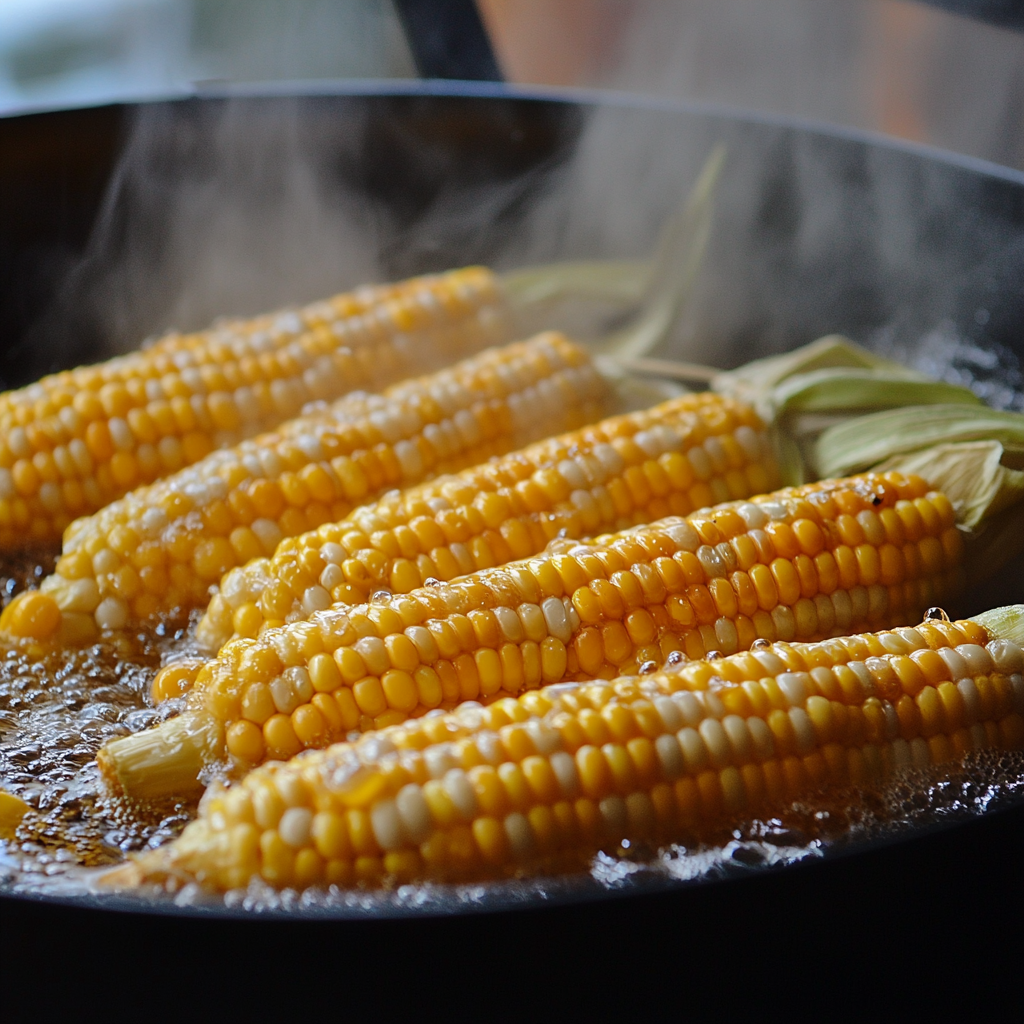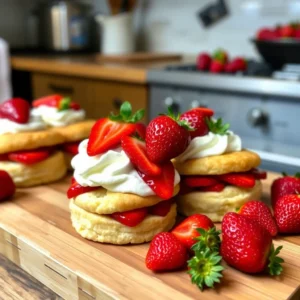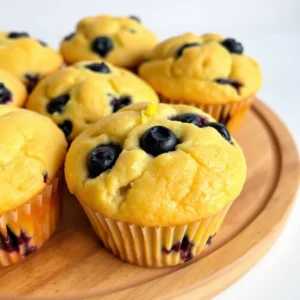There’s something magical about biting into a juicy ear of perfectly boiled corn on the cob. That first crunch, the burst of sweet kernels, and the way butter drips down your fingers – it’s summer on a plate! As a busy mom who needs quick dinner solutions or a food enthusiast looking to perfect your technique, mastering how to boil corn is one of those essential cooking skills that pays delicious dividends all season long.
I’ve spent countless summer evenings perfecting my boiling corn technique, and I’m thrilled to share everything I’ve learned with you. Whether you’re preparing a weeknight family dinner or hosting a backyard barbecue, this simple yet versatile dish is guaranteed to bring smiles around your table.
Why You’ll Love This Boiling Corn Method
If you’ve ever struggled with tough, chewy corn or bland, waterlogged kernels, you’re not alone! Boiling corn seems straightforward, but those little details make all the difference between “meh” and “WOW!” My foolproof method ensures your corn emerges tender, sweet, and ready for whatever delicious toppings you dream up.
The beauty of boiling corn lies in its simplicity. Unlike complicated recipes that demand constant attention, this cooking method gives you freedom to focus on other aspects of your meal preparation. Just a few minutes in hot water transforms those fresh ears into a crowd-pleasing side dish that pairs beautifully with nearly everything.
Plus, boiled corn is incredibly versatile. Once you master the basic technique, it becomes a blank canvas for creativity. My kids love classic butter and salt, my husband goes for a spicy chili-lime version, and I often experiment with fresh herbs and seasonings depending on our main course. One cooking method, endless possibilities!
Choosing the Perfect Corn
Before we dive into boiling, let’s talk about selecting the best corn. Here’s a little secret – the fresher your corn, the sweeter it tastes! When shopping, look for:
- Bright green husks that feel slightly damp
- Tassels (those silky strands at the top) that are golden brown and slightly sticky, not dry or black
- Kernels that feel plump and firm when you gently press through the husk
If possible, try to cook corn the same day you buy it. If that’s not an option (hello, busy life!), store it in the refrigerator with husks intact and enjoy within 2-3 days for optimal sweetness.
Essential Ingredients for Boiling Corn
One reason I adore this recipe is its simplicity. You’ll need:
- 4 ears of fresh corn
- Water (enough to fully submerge the corn)
- 1 tablespoon salt
- 1 tablespoon sugar (optional, but helps enhance sweetness)
- Butter or plant-based alternative for serving
- Optional seasonings and toppings
That’s it! I bet you already have everything you need in your kitchen right now. For a family of four, I typically prepare 4-6 ears, allowing 1-2 per person depending on hunger levels and what else we’re serving.
Step-by-Step Guide to Perfectly Boiled Corn
Step 1: Prepare the Corn
Start by removing those outer husks and silks. I find the easiest method is to:
- Peel back the husks, starting from the top.
- Remove and discard the silk strands.
- Break off any excess stalk at the bottom if it’s particularly long.
Mom hack: To easily remove those clingy silk strands, dampen a paper towel and gently rub it over the corn. The moisture helps the silks stick to the towel instead of your corn!
If your pot isn’t large enough to fit whole ears, don’t hesitate to break them in half. While whole ears make for beautiful presentation, halves are perfectly practical for everyday meals and actually easier for little hands to manage.
Step 2: Prepare Your Boiling Liquid
Fill a large pot with enough water to completely cover your corn. This is one time when you don’t want to skimp on water – sufficient liquid ensures even cooking.
Now for my secret weapon: add 1 tablespoon of salt and 1 tablespoon of sugar to the water. The salt helps penetrate the kernels with flavor, while the sugar enhances corn’s natural sweetness. Trust me, this small step makes a noticeable difference!
For a richer flavor profile, you can also add:
- A splash of milk
- A tablespoon of butter
- A bay leaf or sprig of fresh herbs
Place your pot on the stove and bring the water to a rolling boil over high heat. You’ll want bubbles dancing vigorously before adding your corn.
Step 3: Boil to Perfection
Once your water reaches a rolling boil, carefully add your prepared corn ears. I use tongs to avoid any hot water splashes.
Cover the pot with a lid – this helps the water return to boiling quickly and traps steam for even cooking. Now, set your timer for 7-10 minutes.
The exact cooking time depends on your texture preference:
- 5-7 minutes for crisp-tender corn with a slight crunch
- 8-10 minutes for softer kernels that practically melt in your mouth
I personally prefer somewhere in the middle – around 8 minutes usually hits that sweet spot where the corn is tender but still has a pleasant bite.
While boiling, resist the urge to constantly check your corn. Every time you lift the lid, you release heat and extend cooking time. Trust the process!
Step 4: The Moment of Truth
When your timer beeps, carefully remove one ear of corn using tongs and test a kernel. It should be tender but still have a slight resistance when bitten – similar to al dente pasta.
Once done to your liking, drain the corn in a colander. If you’re not serving immediately, you can place them back in the empty pot with a lid to keep warm for 5-10 minutes.
Step 5: Dress It Up!
Now comes the fun part – adding your favorite toppings! Classic butter and salt never disappoint, but why not explore these delicious variations:
- Herb butter: Mix softened butter with minced herbs like parsley, chives, or basil
- Mexican-style: Brush with lime-infused butter and sprinkle with chili powder and cotija cheese
- Garlic parmesan: Rub with a cut garlic clove and dust with freshly grated parmesan
- Sweet and savory: Drizzle with honey butter and a pinch of sea salt
I always serve boiled corn immediately while it’s hot because that’s when butter melts into all those little crevices between kernels, creating little pools of deliciousness in every bite.
The Perfect Summer Side Dish
Boiling corn is one of those cooking methods that feels both timeless and ever-relevant. It connects us to generations of home cooks who’ve prepared this simple dish, while still fitting perfectly into our modern, busy lives.
What I love most about boiled corn is its ability to complement almost any meal. It’s equally at home alongside:
- Juicy grilled burgers
- Tender barbecue chicken
- Fresh summer salads
- Hearty pasta dishes
- Zesty fish tacos
Plus, it’s a rare side dish that appeals to even the pickiest eaters. My youngest went through a phase where vegetables were considered suspicious at best, but corn on the cob? Always welcomed with enthusiasm!
Cooking Tips for Boiling Corn Success
Let’s be honest – while boiling corn isn’t rocket science, those little tricks and techniques can elevate your corn from “good enough” to “can I please have seconds?” Here are my tried-and-true tips that make all the difference:
Freshness is Everything
The clock starts ticking the moment corn is picked! As corn ages, its natural sugars convert to starch, making it less sweet and more mealy. If you’ve ever wondered why farm-fresh corn tastes so much better than store-bought that’s been sitting around, that’s why!
When possible, cook corn the same day it’s harvested or purchased. If you must wait, store it unshucked in the refrigerator with husks intact – they act as natural moisture-preservers.
The Salt Debate Settled
Some cooking myths never die, and “salt toughens corn” is one of them. I tested this extensively (much to my family’s delight – they ate a LOT of corn that month!), and I’m here to report: salt in the boiling water does NOT toughen your corn. In fact, it seasons it beautifully from the inside out.
The real culprit for tough corn? Overcooking or starting with corn that’s past its prime. So salt that water generously – about a tablespoon per gallon – and enjoy properly seasoned corn.
Watch Your Timer
Overcooked corn loses its delightful texture and becomes mushy. When corn is boiled too long, those perfect little pops of juice when you bite down disappear, and you’re left with something more akin to canned corn. Set a timer and taste-test at the minimum cooking time – you can always cook it longer, but you can’t un-cook it!
And if you accidentally leave your corn in too long? Don’t panic! Slice those kernels off the cob and use them in a corn salad or soup where texture is less important. Kitchen mishaps become kitchen magic with a little creativity!
The Milk Secret
Adding a splash of milk to your boiling water might sound strange, but there’s science behind this grandmotherly trick. Milk contains natural sugars and fats that can enhance corn’s flavor while promoting caramelization of the kernels. It’s subtle but noticeable, especially with corn that isn’t at peak freshness.
Butter Application Strategy
Don’t just plop butter on top of your corn! For even coverage, I hold one end of the hot corn with a napkin and roll it over a stick of butter. This creates a perfect, even layer that melts into all the nooks and crannies between kernels. No more fighting with sliding butter pats!
A Corn-y Personal Story
Last summer, my sister’s family visited during peak corn season. My nephew – a notorious vegetable avoider – watched suspiciously as I prepared a big pot of boiling corn. “I don’t like corn,” he announced preemptively, arms crossed.
Rather than arguing, I invited him to help. Together, we husked the corn, mixed up a selection of flavored butters, and set up a “corn topping bar” with everything from cheese to herbs to a child-friendly chili-lime seasoning.
When dinner time came, curiosity overcame skepticism. He created his own corn masterpiece – butter, a sprinkle of cheese, and just a tiny dash of sweet paprika “for color.” After one tentative bite, his eyes widened, and he declared, “This isn’t regular corn. This is GOOD corn!”
Now, whenever they visit, he asks if we can make “that special corn” again. Sometimes the simplest foods create the strongest memories.
Frequently Asked Questions
How do I know when my corn is perfectly cooked?
When corn is perfectly cooked, the kernels will be bright yellow, plump, and tender when pierced with a fork. Take an ear out of the water and test a kernel by pressing it with your fingernail – it should burst with juice. If it feels firm or starchy, give it another minute in the boiling water. Most corn reaches ideal doneness between 7-10 minutes of boiling, but this can vary depending on the corn’s freshness and your texture preference.
Can I boil corn ahead of time for a party?
Absolutely! Corn can be boiled up to 30 minutes before serving and kept warm. After boiling, drain the corn and return it to the empty pot (off the heat). Cover with a lid to trap moisture and warmth. For longer holds, place a clean kitchen towel over the corn before adding the lid to absorb excess condensation that might make the corn soggy. For the very best flavor though, try to time your boiling so it finishes just as guests are ready to eat.
What’s the best way to remove corn silk?
Those clingy silks can be frustrating! My favorite method is using a dry paper towel to grip and pull the majority of silks, followed by a damp paper towel to catch the stubborn stragglers. The moisture helps the remaining silks stick to the towel instead of the corn. Another trick: use a clean, unused toothbrush to gently brush downward along the rows of kernels – the bristles catch those pesky silks beautifully. For the truly dedicated, you can quickly singe remaining silks over an open flame, but that’s usually more effort than necessary for everyday cooking.
Beyond the Boil: Creative Uses for Boiled Corn
While a classic ear of boiled corn slathered with butter is culinary perfection, don’t limit yourself! Boiled corn is wonderfully versatile:
Fresh Corn Salad
Slice kernels off cooled boiled corn and toss with diced bell peppers, red onion, avocado, lime juice, and cilantro for a refreshing summer salad. It’s perfect for picnics since there’s no mayo to worry about.
Corn Soup
Blend kernels from boiled corn with sautéed onions, broth, and a touch of cream for a silky summer soup. Serve it hot with herb garnish or chilled with a swirl of pesto on top.
Corn Fritters
Mix corn kernels with a simple batter of flour, egg, milk, and seasonings, then pan-fry for crispy-outside, tender-inside fritters that make delightful appetizers or side dishes.
Next-Day Cornbread
Add leftover corn kernels to your favorite cornbread recipe for added texture and bursts of sweetness. It transforms a basic side into something special!
The Heart of Summer Cooking
Boiling corn embodies what I love most about summer cooking – simple techniques that let beautiful, seasonal ingredients shine. There’s a certain joy in traditions that connect us across generations and bring families together around the table.
Whether you’re boiling corn for a quiet family dinner or a festive backyard gathering, remember that food is about more than sustenance – it’s about creating moments. That first sweet bite of corn might transport you back to childhood summers or become a new memory for someone at your table.
So the next time you find yourself with fresh corn and a pot of water, know you’re not just boiling corn – you’re continuing a timeless tradition that celebrates summer’s bounty in the most delicious way possible.
Try These Other Summer Favorites
Looking for more seasonal recipes that capture summer’s best flavors? Check out these other favorites from our kitchen:
- Grilled Watermelon Salad with Feta and Mint – A refreshing side that pairs perfectly with boiled corn at barbecues
- 15-Minute Mediterranean Cucumber Tomato Salad – Another quick summer side dish when you’re craving something light and fresh
- Homemade Peach Ice Cream Without an Ice Cream Maker – The perfect summer dessert to follow your corn feast
And if you’re curious about other corn cooking methods, the National Corn Growers Association offers wonderful resources on everything from grilling to roasting this versatile vegetable.
Before you rush off to boil some corn, I’d love to hear about your favorite corn toppings or family traditions! Drop a comment below to share your corn-cooking wisdom – after all, the best recipes evolve through our shared experiences.
Until next time, happy cooking and even happier eating!



